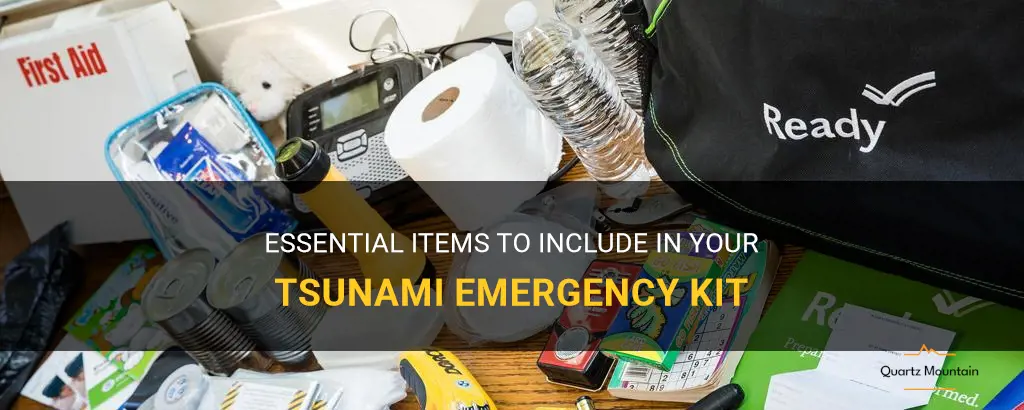
Tsunamis are among the most devastating natural disasters, capable of unleashing immense destruction and causing widespread chaos. In moments like these, being prepared can make all the difference between life and death. One crucial aspect of disaster preparedness is having a well-stocked tsunami emergency kit. This invaluable resource contains essential items to help individuals and families survive and stay safe in the wake of a tsunami. From food and water to first aid supplies and communication tools, these items can mean the ultimate difference between facing the aftermath of a tsunami with confidence or finding oneself woefully unprepared.
| Characteristics | Values |
|---|---|
| Food | Non-perishable food items |
| Water | Bottled water |
| Medications | Prescribed medications |
| First Aid Kit | Bandages, antiseptics, etc. |
| Clothing | Extra clothes |
| Important documents | Identification, insurance information |
| Flashlight | Extra batteries |
| Communication device | Fully charged cell phone |
| Whistle | For signaling for help |
| Cash | In case ATMs are not working |
| Map | Local area map |
| Swiss army knife | Tool for various purposes |
| Personal hygiene items | Toilet paper, soap, etc. |
| Blankets | Extra blankets |
| Radio | Battery-powered radio |
| Duct tape | Versatile repair tool |
What You'll Learn
- What essential items should be included in a tsunami emergency kit?
- How much food and water should be packed per person in preparation for a tsunami?
- Are there any specific documents or personal identification that should be packed in case of a tsunami evacuation?
- Should I pack any specific clothing or survival gear for a tsunami emergency?
- Are there any additional items or supplies that may be useful in a tsunami emergency situation?

What essential items should be included in a tsunami emergency kit?
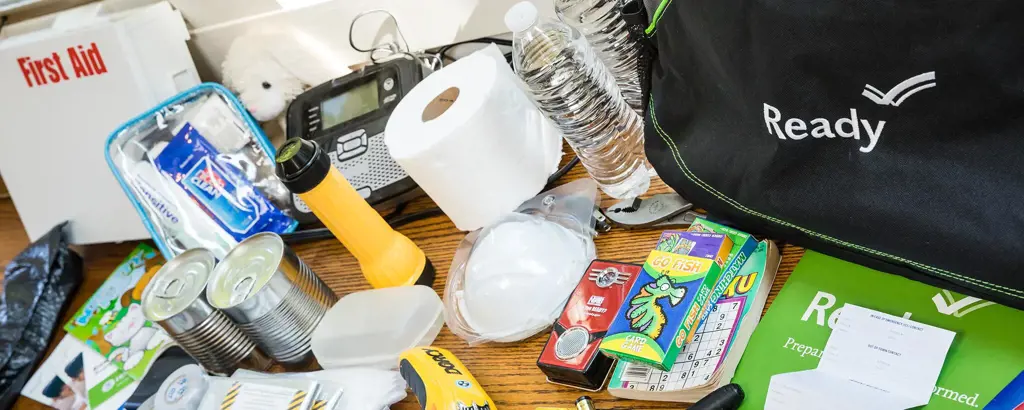
A tsunami is a powerful and destructive natural disaster that can strike with little warning. In order to be prepared and increase the chances of survival in the event of a tsunami, it is important to have an emergency kit that contains essential items. These items can help individuals and families stay safe and meet basic needs until help arrives. Here are some important items that should be included in a tsunami emergency kit:
- Water: It is crucial to have an adequate supply of clean drinking water in case of a tsunami. Experts recommend having at least one gallon of water per person per day for a minimum of three days. This water can be used for drinking, cooking, and personal hygiene.
- Non-perishable Food: In addition to water, a tsunami emergency kit should include a supply of non-perishable food items. These can include canned goods, granola bars, dried fruits, and nuts. It is important to choose foods that do not require refrigeration and can be easily prepared without the need for electricity or gas.
- Medications: If you or any family members require regular medications, it is vital to have a sufficient supply in your emergency kit. Make sure to rotate these medications regularly to ensure their effectiveness and expiration dates.
- First Aid Kit: Accidents and injuries can occur during a tsunami, so having a well-stocked first aid kit is essential. The kit should include items such as bandages, antiseptic wipes, adhesive tape, pain relievers, and any necessary prescription medications.
- Flashlights and Batteries: Tsunamis often cause power outages, so it is important to have a reliable source of light. Include flashlights and extra batteries in your emergency kit to provide illumination especially during the night.
- Personal Hygiene Items: Maintaining personal hygiene is important, even during a disaster. Include items such as toothbrushes, toothpaste, soap, and toilet paper in your emergency kit. Hand sanitizer and wet wipes can also be useful for sanitation purposes.
- Radio: A battery-powered or hand-crank radio should be included in your tsunami emergency kit. This will allow you to stay informed about the latest updates and alerts from emergency officials.
- Whistle: A whistle can be a vital tool for attracting attention and signaling for help. Include a whistle in your emergency kit so that you can alert rescuers to your presence if you become trapped or need assistance.
- Cash: During a tsunami, ATMs and credit card machines may not be accessible due to power outages or infrastructure damage. It is advisable to include some cash in your emergency kit in case you need to purchase supplies or services.
- Important Documents: It is important to have copies of important documents such as identification cards, passports, insurance policies, and contact information for family members and emergency contacts. Keep these documents in a waterproof container within your emergency kit.
Remember to periodically check and update your tsunami emergency kit to ensure that all items are in working order and have not expired. Also, consider any additional items that may be specific to your family's needs such as baby supplies, pet food, or special medical equipment.
In conclusion, a well-prepared tsunami emergency kit can make a significant difference in a disaster situation. By including essential items such as water, non-perishable food, medications, first aid supplies, flashlights, and personal hygiene items, individuals and families can increase their chances of survival and comfort during and after a tsunami.
Essential Packing Guide for Explora Patagonia: What to Bring for the Ultimate Adventure
You may want to see also

How much food and water should be packed per person in preparation for a tsunami?
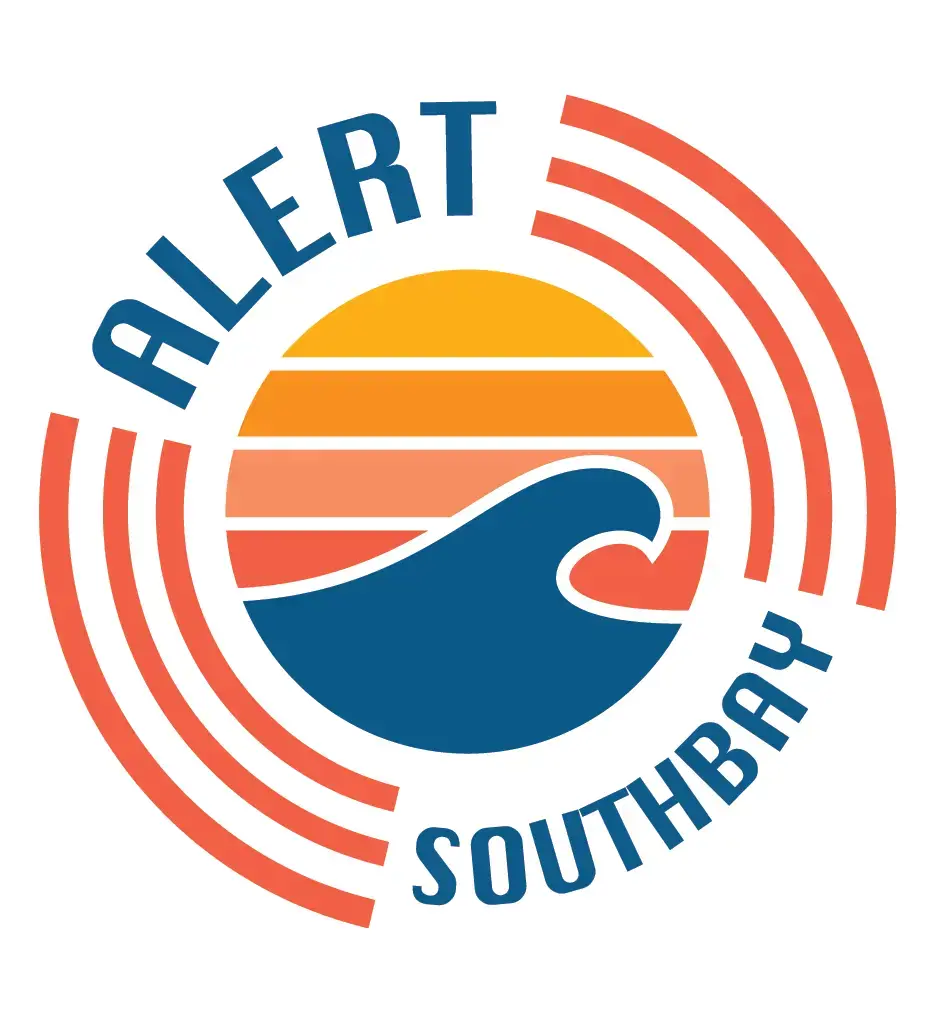
Preparing an emergency kit is crucial in ensuring the safety and well-being of individuals during natural disasters such as tsunamis. One of the essential components of an emergency kit is food and water. When packing food and water in preparation for a tsunami, it is important to consider several factors to ensure an adequate and sufficient supply.
The ideal amount of food and water to pack per person varies depending on the duration of the emergency and the number of people involved. The general rule of thumb is to have enough supplies to last at least three days. However, it is advisable to prepare for a longer period, as it may take time for relief efforts to reach affected areas.
Water is the most critical item to include in your emergency kit. The recommended amount of water to pack per person is a gallon (3.78 liters) per day. This accounts for drinking, cooking, and sanitation needs. For a family of four, it is recommended to pack at least 12 gallons (45.4 liters) of water for a three-day supply. If you have pets or individuals with special needs, additional water should be included to accommodate their requirements.
When selecting food items, choose non-perishable and easy-to-prepare options that provide essential nutrients. Canned goods, dry fruits, energy bars, and packaged snacks are good choices. Aim for a well-balanced diet that includes carbohydrates, proteins, and fats. It is also important to consider any dietary restrictions or allergies within your household.
While it may be tempting to pack excessive amounts of food, it is essential to prioritize weight and portability in case evacuation becomes necessary. Remember that you may need to carry your emergency kit over long distances or in challenging conditions. Pack lightweight, compact, and easy-to-carry food items that can fit into a backpack or bag.
In addition to food and water, it is recommended to include other items in your emergency kit. These may include a first aid kit, flashlights, batteries, a portable radio, a whistle, blankets, hygiene products, medications, and spare clothes. These items are crucial for survival and comfort during an emergency situation.
To further ensure preparedness, it is advisable to regularly check and rotate the supplies in your emergency kit. Monitor expiration dates of food items and replace them as needed. Additionally, assess your family's needs periodically and adjust the quantity of food and water accordingly.
Experience has shown that being well-prepared significantly improves the chances of survival and reduces the impact of a tsunami. Having an emergency kit that includes an adequate supply of food and water is crucial in times of crisis. By considering the recommended guidelines, along with individual requirements and preferences, you can confidently face the challenges that a tsunami may present.
What to Pack for a Costa Rican Adventure in April
You may want to see also

Are there any specific documents or personal identification that should be packed in case of a tsunami evacuation?
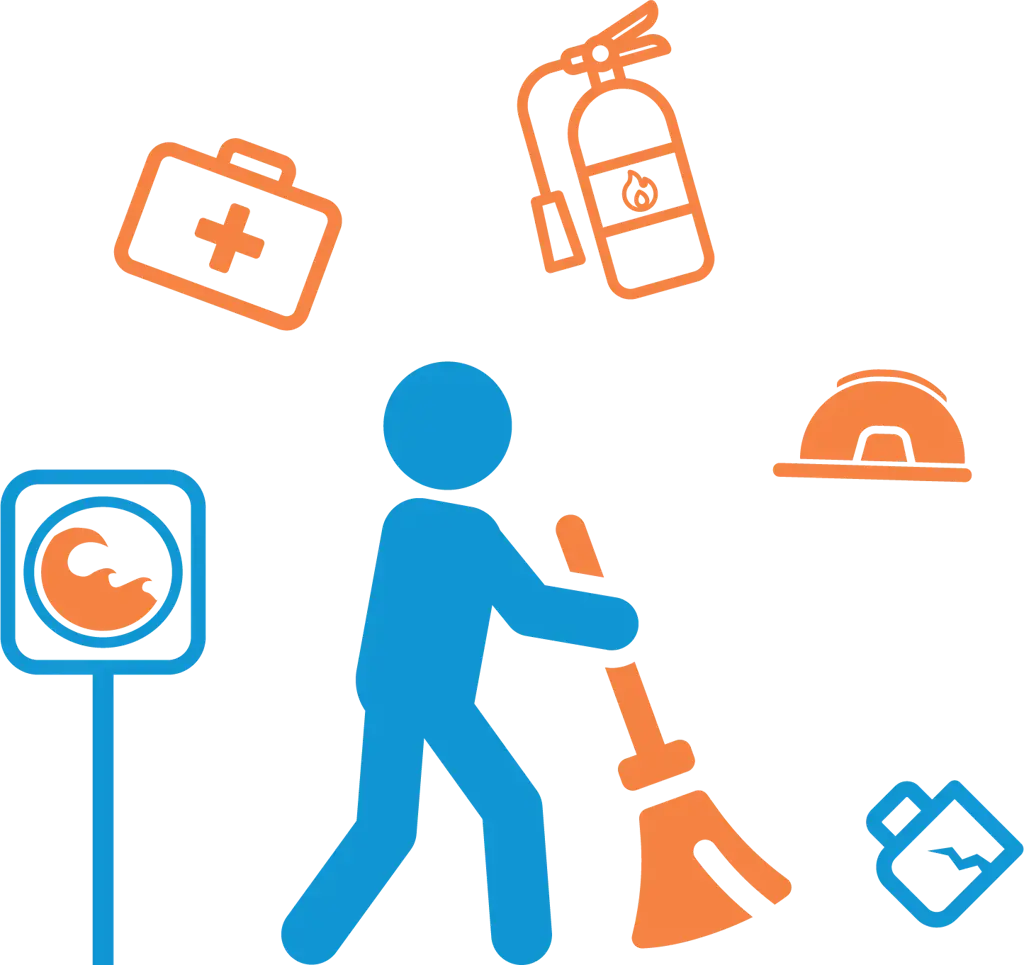
In the event of a tsunami evacuation, it is crucial to prioritize the safety of yourself and your loved ones. Personal belongings can always be replaced, but your life cannot. However, if you have the time and ability to gather important documents and personal identification, it is highly recommended to do so. These documents can be invaluable in the aftermath of a disaster, helping you reestablish your identity and access essential services. Here are some specific documents and personal identification items you should consider packing in case of a tsunami evacuation:
Identification Documents:
- Passports: If you are traveling internationally or in a coastal area prone to tsunamis, it is wise to keep your passport in a safe and easily accessible place. This document is essential for identification and travel purposes.
- Driver's license: Your driver's license can serve as a form of identification when needed. It is often required when opening bank accounts or proving residency.
- National identification cards: If you have a national ID card issued by your country, it is recommended to carry it with you. This can help establish your identity and confirm your citizenship.
- Social security cards: Social security cards are vital for accessing government services, such as healthcare and retirement benefits. Keeping them safe during a tsunami evacuation is essential.
Financial Documents:
- Bank account information: It is advisable to keep a record of your bank account details, including account numbers, routing numbers, and contact information. This information will be helpful in case your primary means of accessing funds is compromised.
- Credit cards: If possible, take your credit cards with you. This can provide you with a means of purchasing essential supplies or finding temporary accommodation during an evacuation.
- Insurance policies: Gather important insurance documents for health, home, and contents. These policies can facilitate the process of filing insurance claims and receiving compensation for damages.
Medical Documents:
- Prescription medications: If you or your family members require prescription medications, make sure to have an adequate supply with you. This can be crucial, especially if you anticipate being away from home for an extended period during the evacuation.
- Medical history records: If you have any significant medical conditions, it is helpful to have your medical history records, including recent test results and doctor's notes. This information can assist healthcare professionals in providing appropriate care in case of injuries or medical emergencies.
Legal and Property Documents:
- Wills and power of attorney documents: These legal documents outline your wishes regarding finances, healthcare, and the distribution of assets in case of an unfortunate event. It is advisable to keep copies in a safe location during a tsunami evacuation.
- Property deeds and titles: These documents prove your ownership of property and can be crucial when dealing with insurance claims or government assistance programs after a disaster.
- Birth and marriage certificates: These vital records can help establish family ties and citizenship. It is advisable to keep copies in a safe and easily accessible place.
Digital Back-Up:
Consider maintaining digital copies of all essential documents using cloud storage or secure external hard drives. By doing so, even if physical copies are damaged or lost during a tsunami, you can still access important information remotely.
Remember, the safety of yourself and your loved ones should always be the priority during a tsunami evacuation. While it is helpful to gather important documents and personal identification, please ensure that doing so does not compromise your safety or hinder the evacuation process.
Essential Items to Pack for a 3-Week Trip to Scotland in August
You may want to see also

Should I pack any specific clothing or survival gear for a tsunami emergency?
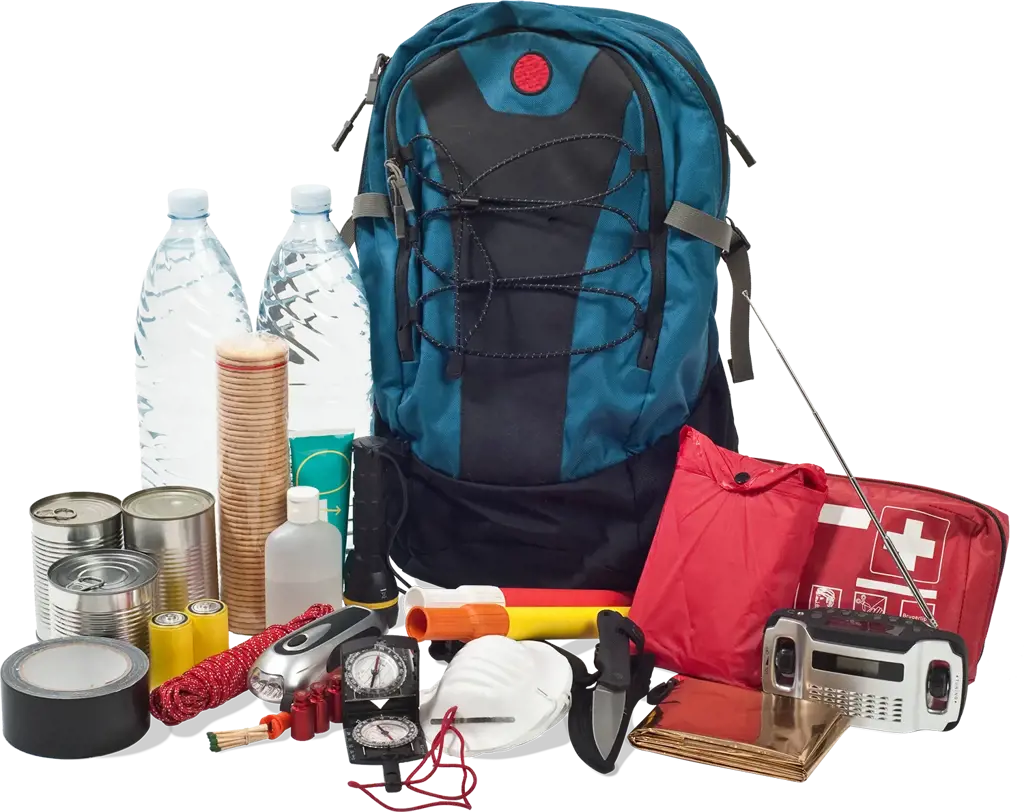
Tsunamis are powerful and destructive natural disasters that can strike without warning, leaving little time for evacuation. It is crucial to be prepared and have the necessary supplies on hand to increase your chances of survival during a tsunami emergency. While the primary goal should always be to evacuate to higher ground, you may want to pack specific clothing and survival gear to aid in your emergency preparations.
First and foremost, when it comes to clothing, you should prioritize practicality and versatility. Opt for lightweight, quick-drying clothing that can wick away moisture and keep you comfortable in potentially wet and humid conditions. Pack several changes of clothes, including long-sleeved shirts, lightweight pants, and sturdy shoes. Avoid garments made of cotton, as it retains water and takes longer to dry, potentially leading to hypothermia if you are exposed to cold temperatures.
In addition to clothing, consider packing essential survival gear that can assist you in the aftermath of a tsunami. Here are some items you may consider including in your emergency kit:
- Emergency food and water: Include non-perishable food items such as energy bars, canned goods, and dried fruits. Pack enough water to sustain you for at least three days. Consider including a portable water filtration system or water purification tablets as well.
- First aid kit: Make sure your first aid kit is well-stocked with bandages, antiseptic solution, pain relievers, and any necessary medications.
- Flashlight and extra batteries: In the event of a power outage, a flashlight will prove invaluable. Pack extra batteries to ensure you have a reliable light source.
- Radio: Include a battery-operated or hand-crank radio to stay informed about potential updates and emergency instructions.
- Whistle: A whistle can be used to signal for help if you become trapped or buried under debris.
- Multi-tool: A multi-tool, such as a Swiss Army knife, can be an invaluable resource for a variety of purposes, including opening cans, cutting through debris, and performing basic repairs.
- Emergency blanket and shelter: Include a lightweight, waterproof emergency blanket and a portable shelter, such as a tarp or lightweight tent, to protect yourself from the elements.
- Personal hygiene items: Pack essentials such as toilet paper, soap, and hand sanitizer to maintain cleanliness and prevent the spread of diseases.
- Cash and important documents: It is always a good idea to have some cash on hand in case of emergencies. Additionally, keep important documents, such as identification cards and insurance information, in a waterproof bag.
- Personal items: Consider including items that provide comfort and solace, such as a favorite book, family photos, or a small game to help pass the time.
- Extra phone battery or charger: In case you need to use your phone for communication or to access emergency information, bring an extra battery or portable charger to ensure you have a power source.
Remember, the specific items you should pack may vary based on your location, personal needs, and the recommendations of local authorities. It is essential to stay informed about the specific risks and recommendations for your area and adjust your emergency preparations accordingly. Practice regular drills and develop a communication plan with family members or loved ones to ensure everyone knows what to do in the event of a tsunami emergency.
While it is impossible to predict or fully control the impact of a tsunami, being prepared and having the necessary clothing and survival gear can significantly increase your chances of survival. Take the time to pack your emergency kit, familiarize yourself with evacuation routes, and stay informed about potential risks in your area. By taking these steps, you can ensure your safety and the safety of your loved ones during a tsunami emergency.
Essential Items to Pack for a Baby on a Snow Trip
You may want to see also

Are there any additional items or supplies that may be useful in a tsunami emergency situation?
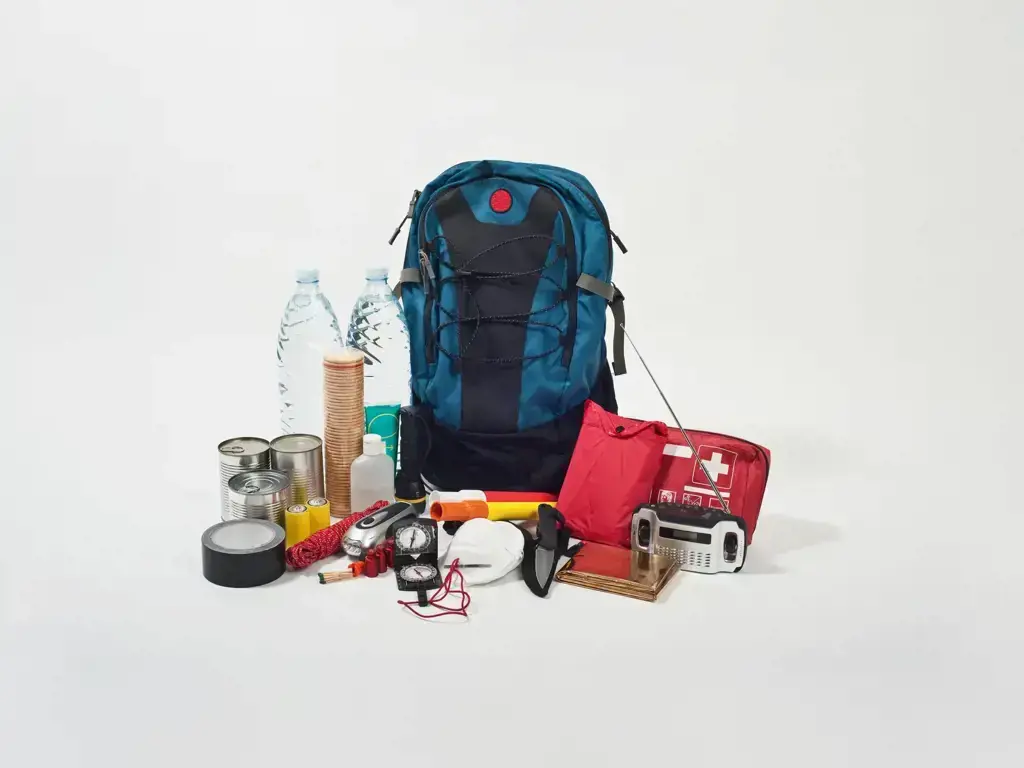
When it comes to preparing for a tsunami emergency situation, it is important to have a comprehensive plan in place. In addition to the basic supplies such as food, water, and first aid kits, there are several additional items that can be useful during a tsunami. These items can help ensure your safety and provide you with the necessary tools to navigate through the aftermath of a tsunami. Here are some important items to consider adding to your emergency kit:
- Portable Radio: A portable, battery-operated radio is essential for receiving emergency alerts and updates. During a tsunami, communication systems may become disrupted, and having a radio can provide you with critical information about evacuation orders, safe zones, and relief efforts.
- Whistle: A whistle is a simple yet effective tool for signaling your location to rescuers. It can help you attract attention and let others know that you are in need of help.
- Life Jacket: A life jacket is crucial for staying afloat in the event of a tsunami. It provides buoyancy and can increase your chances of survival if you are caught in a flood or strong currents.
- Waterproof Document Storage: It is important to keep your important documents, such as passports, identification cards, and insurance policies, in a waterproof and fireproof container. This will help ensure their safety and enable you to quickly access them in the aftermath of a tsunami.
- Whistle with Compass: A whistle with an integrated compass can provide you with both signaling and navigational capabilities. It can help you find your way to safety and guide you towards relief centers or evacuation routes.
- Emergency Blankets: Emergency blankets are compact and lightweight, making them easy to carry in your emergency kit. These blankets are designed to retain body heat and can help keep you warm in cold and wet conditions.
- Water Purification Tablets: In the event of a tsunami, access to clean drinking water may be limited. Water purification tablets can help ensure that the water you find is safe to drink. They are easy to use and can effectively remove harmful bacteria and viruses from contaminated water sources.
- Multi-Tool: A multi-tool is a versatile and compact tool that can be especially useful during a tsunami emergency. It typically includes a variety of tools such as knives, pliers, screwdrivers, and can openers. A multi-tool can help you perform essential tasks such as cutting ropes, opening canned food, or repairing damaged equipment.
- Emergency Light Sources: Having a reliable source of light is crucial during an emergency situation. Consider including items such as flashlights, headlamps, and glow sticks in your emergency kit. These sources of light can help you navigate through dark areas and search for supplies or shelter.
- Emergency Cash: In the aftermath of a tsunami, access to financial institutions may be limited. Having a reserve of emergency cash can be beneficial for purchasing essential supplies, paying for transportation, or dealing with unforeseen circumstances.
Remember that every emergency situation is unique, and it is important to assess your specific needs and circumstances when preparing for a tsunami. Regularly check and update your emergency supplies to ensure they are in good condition and ready for use. Stay informed about local emergency plans and evacuation routes, and make sure to follow the instructions and guidelines provided by authorities during a tsunami warning or emergency. Being well-prepared can greatly increase your chances of safety and survival during a tsunami.
Essential Packing List for an Idyllic 8 Day Beach Trip
You may want to see also
Frequently asked questions
In a tsunami emergency kit, it is important to include essential items that will help you survive during and after a tsunami. Some important items to pack are non-perishable food, drinking water, a first aid kit, a flashlight, spare batteries, a portable radio, extra clothing, blankets, a whistle or air horn to signal for help, personal hygiene items, and important documents such as identification and insurance papers. It is also recommended to pack any necessary medications and a map of the area.
While it is important to have essential items in your tsunami emergency kit, it is not necessary to pack tools or equipment specifically for a tsunami. The focus should be on packing items that will help you survive and sustain yourself during and after the event. However, it may be beneficial to have a multi-tool or Swiss Army knife, as it can be useful in various situations. Additionally, a small shovel or spade can be helpful if you need to dig for water or create a makeshift shelter.
When preparing for a tsunami, it is important to have an adequate supply of food and water to sustain yourself and your family for at least 72 hours. The general rule of thumb is to have one gallon of water per person per day, so a family of four would need at least 12 gallons of water for three days. As for food, pack non-perishable items such as canned goods, granola bars, nuts, and dried fruits. Aim for enough food to provide each person with approximately 2,000-2,500 calories per day. It is also recommended to have a manual can opener in case of power outages.







